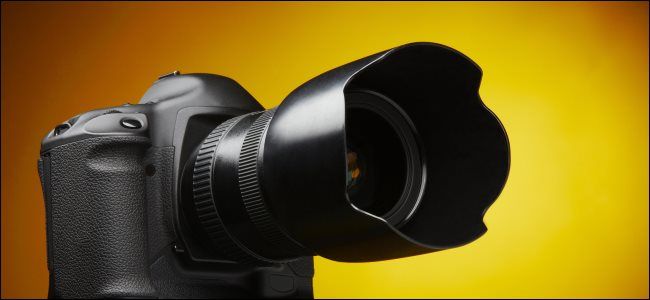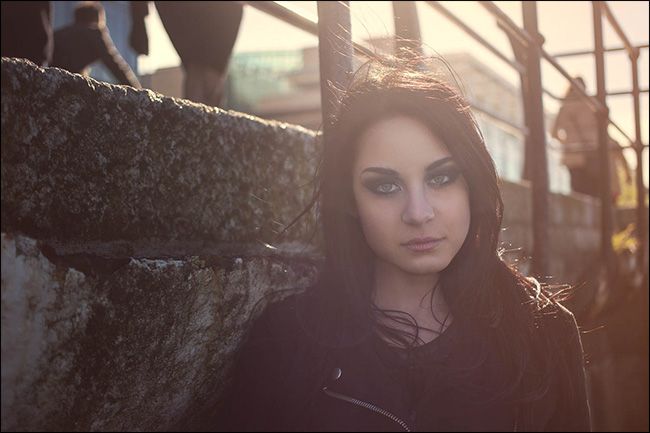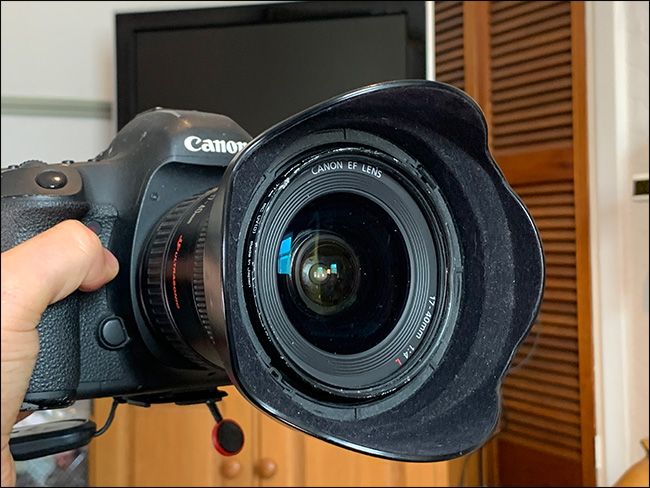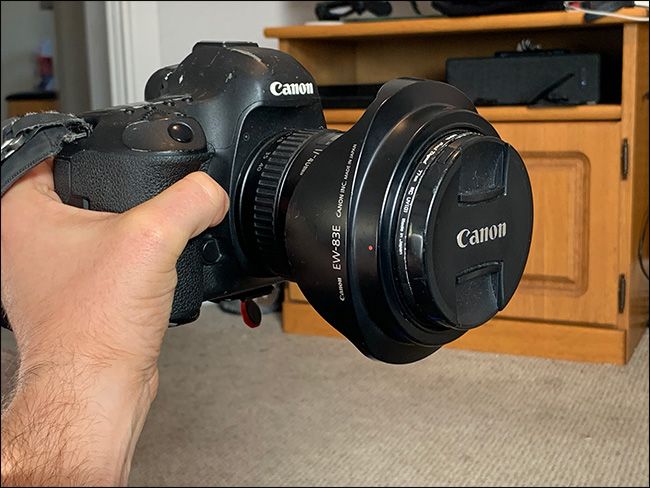Quick Links
Almost every lens you can buy comes with a stiff plastic collar that fits on the front called a lens hood. Here’s what they do, why they’re important, and when you should use one.
Lens Hoods Block Unwanted Light
When you take a photo of something, the light reflecting off of it enters the camera through the front of the lens. The light rays pass through the different lens elements, which work together to focus it onto the camera's sensor. If you’ve got everything set up correctly, you'll get a great looking photo.
But a lot is going on inside the camera. Modern lenses aren’t simple convex or concave pieces of glass. They’re incredibly complicated composite lenses. Rather than one big piece of glass, it’s five or 10. And each of these does something to improve the sharpness of the image, eliminate different aberrations, or just ensure your photo is in focus.
The light rays don’t pass through the different glass elements unaffected, either. In addition to being focused and manipulated in intended ways, there’s a transmission loss. This means less light makes it to the camera sensor than the amount that enters the lens, which is why cinema lenses use t-stops instead of f-stops.
And that’s just for the light rays reflected off the scene you’re trying to photograph. Light rays are also hitting the front of the lens from every other direction. The rays from more extreme angles are never focused on the sensor; they just bounce around inside the lens, interfering with the quality of the photo. The two most obvious effects of this are lens flares and a washed-out, hazy appearance.
Lens flares are those streaks of bright light that appear in a photo. J.J. Abrams loves to use them in his movies as an effect, but, for the most part, they’re unwanted.
Haziness can be a bit harder to spot, but the effect is no less desirable. In the image shown above without the lens hood, you can see the colors and contrast are a bit muted. There’s also a bit of a bright flare in the bottom right corner. The image shot with the lens hood is just better quality.
What a lens hood does is simple: it shades the front element of the lens and prevents light from hitting it from the most extreme angles. It’s the same as when you shade your eyes from the sun with your hand when you’re trying to see something.
Lens Hoods Also Provide Some Physical Protection
While lens hoods are mostly for blocking light, they also provide a small amount of physical protection. If you’re shooting on a rainy day or near a waterfall, for example, a lens hood can shelter the front of the lens from some of the droplets. It’s not a replacement for an umbrella, but it can give you a few moments to get a shot before your lens is covered in water and unusable.
Similarly, if you bang the lens against something when shooting at a busy wedding or, even worse, knock it off a table, a lens hood provides an extra barrier on the front. It might not save the lens from smashing, but at least the glass front element won't be the first thing that hits the floor.
When to Use a Lens Hood
Generally, you should use a lens hood all the time. They improve the quality of your images and keep your lenses a little safer with almost no tradeoffs. The biggest downside is they add a bit of bulk and are awkward to pack.
Still, the following are the only situations in which you shouldn’t use a lens hood:
- You want lens flare as a creative effect.
- It’s windy and you’re using a tripod (a lens hood could catch the wind).
- You’re shooting in macro and the light source is close to the camera. A lens hood might cast a visible shadow.
- You’re using filters and the filter holder prevents you from attaching a lens hood.
In all other shooting situations, it’s a good idea to use a lens hood if you have one. At worse, it’ll have no effect, but at best, it’ll save a shot.
Different Lens Hoods
There are two major styles of lens hoods: conical and petal-shaped. Conical hoods are the simplest and most effective because they fully shade the front element of the lens. However, if you’re using a wide-angle lens, the edge of the lens hood might appear in the frame.
Petal-shaped hoods are slightly less effective. However, they have strategically placed cutouts that won’t appear in your images, even at the widest focal lengths.
A lens comes with a hood that’s designed for it. It will both fit the front and provide the optimum amount of shade. If you need to replace a lens hood, make sure you buy one with a similar profile.
Tips for Using a Lens Hood
The best advice is to pop the hood on the lens and never take it off. However, situations can get tricky in the real world. Lens hoods are awkward, bulky, and another thing you have to take with you everywhere.
Below are a few tips and things to consider when you use a lens hood:
- Don't forget it: You can attach a hood backwards on a lens so it takes up a bit less space in your bag. Otherwise, keep it in your camera bag. They’re the kind of thing that can get lost in a drawer.
- It makes your camera bigger and more obvious: If you’re trying to keep things low-key, or don't want to announce that you’re a journalist, consider leaving the lens hood off. This can be especially important when crossing international borders.
- It only works on light sources outside the frame: If you’re taking photos directly in sun- or a floodlight, you’re still going to get lens flare. A hood only stops rays from extreme angles, not the one from which you’re shooting.
- It won’t have an obvious effect, but that’s no reason not to use one: Just because you’ve gotten by without a lens hood so far doesn’t mean your next shoot won’t be the one where you need one the most.






